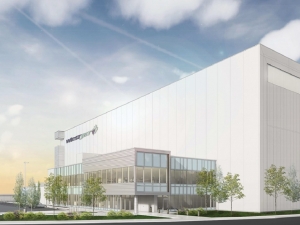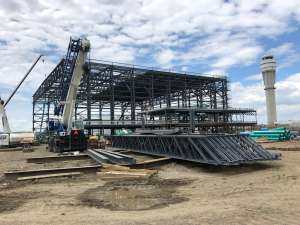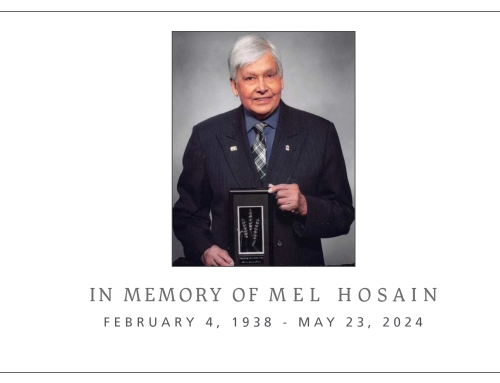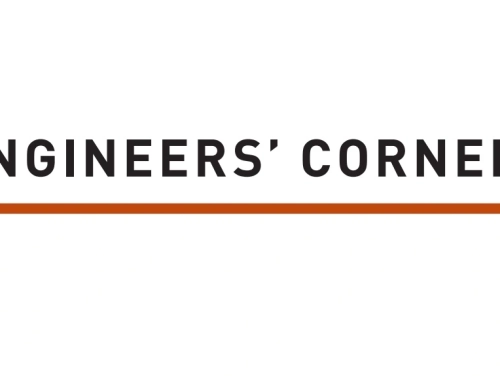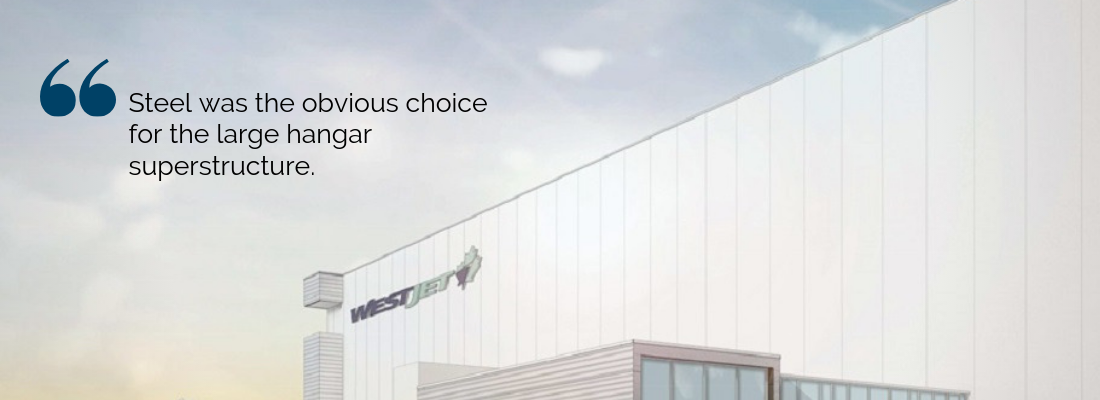 WestJet is joining the ranks of global airlines as it gets ready to deploy 10 new Boeing 787-9 wide body aircraft. The addition of these new “Dreamliner” aircraft to the fleet is the next chapter in the WestJet story.
WestJet is joining the ranks of global airlines as it gets ready to deploy 10 new Boeing 787-9 wide body aircraft. The addition of these new “Dreamliner” aircraft to the fleet is the next chapter in the WestJet story.
By Dave Crawford, P.Eng. & Brian Breukelman, P.Eng.
With the new additions to the fleet, a new home for servicing and maintaining these aircraft at the Calgary International Airport (YYC) was required. Stantec Architecture Ltd. as prime consultant, with Stantec Consulting’s structural team, began the design for the new hangar in 2017. A fast-track construction approach was selected to enable servicing of the new aircraft when they arrive in 2019.
Construction of the pile foundation began in 2017 and the steel superstructure for the hangar and associated office and service shops started in 2018. The project will be complete in early 2019, just-in-time for delivery of the first Dreamliner.
CANA construction is the prime contractor with Glenmore Fabricators taking on the fabrication and erection of the steel superstructure.
Steel was the obvious choice for the large 80m spans (75m clear span) of the hangar superstructure. Twelve (12) massive steel moment frame trusses/columns provide lateral stability in east/west direction while conventional cross-bracing provides the stability required for the opposite building direction. Deep steel deck was used to directly span the 8m distance between the moment frames to avoid secondary framing and minimize the steel weight. The total weight of steel Including the frames, purlins and wind girts comes to over 1,800 tonnes.
Foundation to support the steel structure is provided by driven steel H-pile groups (ranging from seven HP360 piles for the more lightly loaded frames to 21 for the two secondlast bay and end bay supporting the large hangar doors). 1800dp reinforced concrete pile caps tie the H-piles together and provide the necessary surface for mounting the large moment frames to the foundation.
Steel was the obvious choice for the large … hangar superstructure.
NBCC 2010 wind load requirements became a bit tricky – given that the height of the hangar is 26m, the application of Figure I-7 (low buildings under 20m height) gust pressure coefficients was not possible. The “high-buildings” requirements of Figure I-15 became the design basis wind loads. Stantec Consulting Ltd. engineers believed that wind loads were more likely to be similar to the Figure I-7 wind loads with the small increment in height beyond 20m.
Wind tunnel testing by CPP Wind Consultants of Fort Collins, Colorado, was completed to verify this assumption. While the wind loads contributing to the design of the large moment frame trusses were governed primarily by non-wind load cases, the secondary structural elements (girts, cladding, etc) could be substantially reduced. The wind tunnel testing concluded that the design wind loads were much more similar to the Figure I-7 wind loads with the exception of the corner bays which had wind loads more similar to Figure I-15. This load reduction resulted in eliminating over 35,000 kg of steel from the structure.
Project Team
Owner: WestJet
Structural Engineer: Stantec Consulting Ltd.
Prime Contractor: CANA Construction
*This article was originally published in Advantage Steel no. 62 and can be found here.

